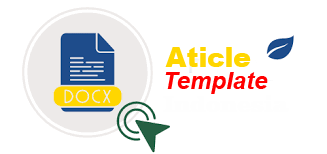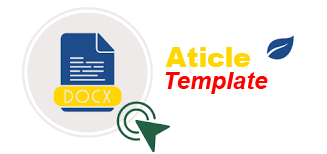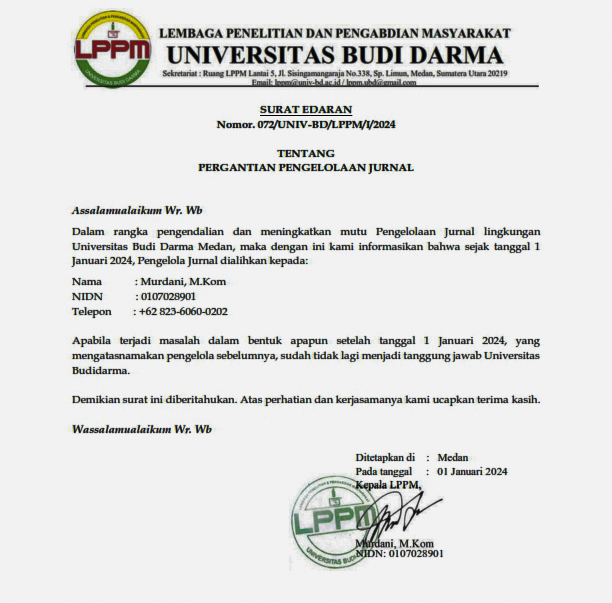Penerapan Metode Additive Ratio Assesment (ARAS) Pada Sistem Pemilihan Tempat Kursus Bahasa Inggris Online
DOI:
https://doi.org/10.30865/json.v3i4.4317Keywords:
English Course, ARAS, Decision Support System, Blackbox Testing, XPAbstract
The selection of the right place for the online English course is certainly expected to produce output that is in line with expectations. For this reason, a solution is needed to help make decisions on choosing the right place for online English courses. A system that can assist in making decisions and can provide recommendations for the right choice is a decision support system (DSS). In the implementation of DSS, appropriate methods or models are also needed according to the cases discussed. One method that can be used is the Additive Ratio Assessment (ARAS) method. The ARAS method is a multi-criteria decision-making method based on the concept of classification using the utility level by comparing the overall index value of each alternative with the overall optimal alternative index value. The system created has features or functions that are in accordance with the needs of using the ARAS method in calculating to perform alternative rankings. Based on the case studies conducted, ARAS was able to find the best alternative from several alternatives with Lister results of 0.459, Engoo of 0.635, Golden English of 0.702, English Academy of 1. The system was made using the XP methodology, with features including being able to manage criteria values, alternatives and count to display the ranking of the best alternatives. In terms of functionality, the system that has been made has met expectations or in other words 100% functions well, and produces calculations that are in accordance with manual calculations. This system can be implemented in a choice of online English courses quickly and precisely.References
E. Munisah, “Peningkatan Kemampuan Bahasa Inggris Siswa Sekolah Dasar Melalui Program Teras Belajar,†J. Elsa, vol. 19, no. 1, pp. 24–30, 2021.
A. Ulfa and Romindo, “Sistem Pendukung Keputusan Untuk Memilih Tempat Kursus Bahasa Inggris Dikota Medan Dengan Penerapan Metode Analitycal Hierarchy Process ( AHP ),†Ris. dan E-Jurnal Manaj. Inform. Komput., vol. 1, no. 2, pp. 7–13, 2017.
R. I. Borman, M. Mayangsari, and M. Muslihudin, “Sistem Pendukung Keputusan Menentukan Lokasi Perumahan Di Pringsewu Selatan Menggunakan Fuzzy Multiple Attribute Decision Making,†JTKSI, vol. 01, no. 01, pp. 5–9, 2018.
R. I. Borman, D. A. Megawaty, and A. Attohiroh, “Implementasi Metode TOPSIS Pada Sistem Pendukung Keputusan Pemilihan Biji Kopi Robusta Yang Bernilai Mutu Ekspor (Studi Kasus : PT. Indo Cafco Fajar Bulan Lampung),†Fountain Informatics J., vol. 5, no. 1, pp. 14–20, 2020.
R. I. Borman and H. Fauzi, “Penerapan Metode Perbandingan Eksponensial (MPE) Dalam Sistem Pendukung Keputusan Penerimaan Beasiswa Siswa Berprestasi Pada SMK XYZ,†CESS J. Comput. Eng. Syst. Sci., vol. 3, no. 1, pp. 17–22, 2018.
S. W. Sari and B. Purba, “Sistem Pendukung Keputusan Pemilihan Ketua Danru Terbaik Menggunakan Metode ARAS,†in Seminar Nasional Teknologi Komputer & Sains (SAINTEKS) SAINTEKS 2019, 2019, pp. 291–300.
H. Susanto, “Penerapan Metode Additive Ratio Assessment(Aras) Dalam Pendukung Keputusan Pemilihan Susu Gym Terbaik Untuk Menambah Masa Otot,†Maj. Ilm. INTI, vol. 13, no. 2, pp. 1–5, 2018.
T. R. Sitompul and N. A. Hasibuan, “Sistem Pendukung Keputusan Seleksi Tenaga Kerja Untuk Security Service Menggunakan Metode Aras,†J. Media Inform. Budidarma, vol. 2, no. 1, pp. 1–9, 2018.
I. Ahmad, R. I. Borman, J. Fakhrurozi, and G. G. Caksana, “Software Development Dengan Extreme Programming (XP) Pada Aplikasi Deteksi Kemiripan Judul Skripsi Berbasis Android,†J. Invotek Polbeng - Seri Inform., vol. 5, no. 2, pp. 297–307, 2020.
I. Ahmad, A. T. Prastowo, E. Suwarni, and R. I. Borman, “Pengembangan Aplikasi Online Delivery Sebagai Upaya Untuk Membantu Peningkatan Pendapatan,†JMM (Jurnal Masy. Mandiri), vol. 5, no. 6, pp. 4–12, 2021.
R. Napianto, Y. Rahmanto, R. I. Borman, and O. Lestari, “Software Development Sistem Pakar Penyakit Kanker Pada Rongga Mulut Berbasis Web,†in Dalam Seminar Nasional Pengaplikasian Telematika (Sinaptika), 2019.
N. Y. Arifin et al., Analisa Perancangan Sistem Informasi. Batam: Cendikia Mulia Mandiri, 2021.
R. I. Borman, A. T. Priandika, and A. R. Edison, “Implementasi Metode Pengembangan Sistem Extreme Programming (XP) pada Aplikasi Investasi Peternakan,†JUSTIN (Jurnal Sist. dan Teknol. Informasi), vol. 8, no. 3, pp. 272–277, 2020.
R. I. Borman, I. Yasin, M. A. P. Darma, I. Ahmad, Y. Fernando, and A. Ambarwari, “Pengembangan Dan Pendampingan Sistem Informasi Pengolahan Pendapatan Jasa Pada PT. DMS Konsultan Bandar Lampung,†J. Soc. Sci. Technol. Community Serv., vol. 1, no. 2, pp. 24–31, 2020.
R. D. Gunawan and R. Napianto, “Implementation of Dijkstra ’ S Algorithm in Determining the Shortest Path (Case Study : Specialist Doctor Search in Bandar Lampung),†Int. J. Inf. Syst. Comput. Sci., vol. 3, no. 3, pp. 98–106, 2019.
W. N. Cholifah, Y. Yulianingsih, and S. M. Sagita, “Pengujian Black Box Testing Pada Aplikasi Action & Strategy Berbasis Android Dengan Teknologi Phonegap,†J. String, vol. 3, no. 2, pp. 206–210, 2018.
Downloads
Published
How to Cite
Issue
Section
License

This work is licensed under a Creative Commons Attribution 4.0 International License
Authors who publish with this journal agree to the following terms:
- Authors retain copyright and grant the journal right of first publication with the work simultaneously licensed under Creative Commons Attribution 4.0 International License that allows others to share the work with an acknowledgment of the work's authorship and initial publication in this journal.
- Authors are able to enter into separate, additional contractual arrangements for the non-exclusive distribution of the journal's published version of the work (e.g., post it to an institutional repository or publish it in a book), with an acknowledgment of its initial publication in this journal.
- Authors are permitted and encouraged to post their work online (e.g., in institutional repositories or on their website) prior to and during the submission process, as it can lead to productive exchanges, as well as earlier and greater citation of published work (Refer to The Effect of Open Access).





